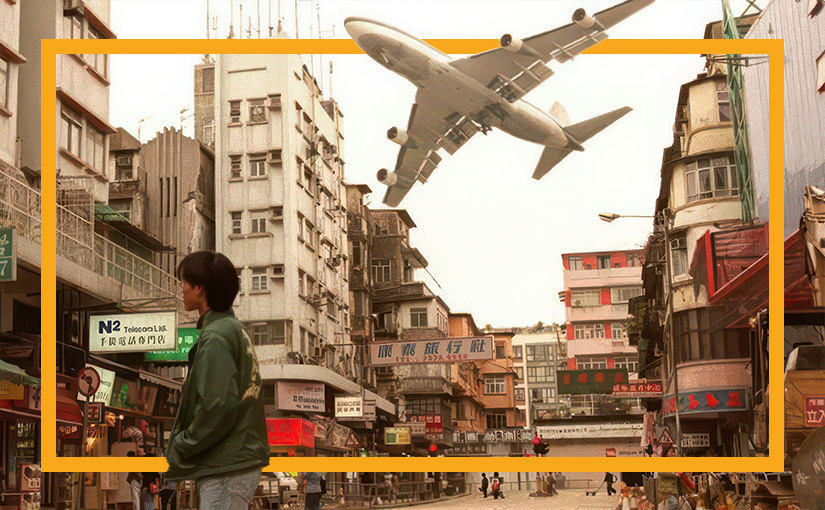From Rooftops to Runways: Tak Airport and Modern Lantau Infrastructure
- Asian Tiger Hong Kong
-
Home » News » Industry News » From Rooftops to Runways: Tak Airport and Modern Lantau Infrastructure
Kai Tak Airport is a name etched in aviation history for its heart-stopping landings and breathtaking approaches. This airport, situated in Kowloon City, Hong Kong, was one of the busiest and most iconic hubs in the world from 1925 to 1998. Known for the challenging geography and proximity to urban areas, Kai Tak was more than an airport; it was a spectacle and a cultural phenomenon.
When the dramatic and nostalgia-laden Kai Tak officially closed its doors in 1998, a new chapter opened regarding aviation and infrastructure development in Hong Kong. This transition brought changes to travel and reshaped the way people and business did interactions throughout different areas of the region, such as Lantau Island. Such is the story of the legacies of Kai Tak and subsequent transformative infrastructure development, further showing the journey of Hong Kong towards modern connectivity and progress.
Kai Tak Airport: A Legendary Legacy
Situated in Kowloon City, Kai Tak Airport was infamous for its unusual and hair-raising approach. Pilots navigating into Kai Tak had to execute a sharp 47-degree turn just seconds before landing. This “checkerboard approach,” named after a large red-and-white checkerboard painted on a hillside to guide pilots, was one of the most challenging in aviation history. Only the most skilled aviators were able to handle the technical demands of landing at Kai Tak, gaining the airport a reputation as a proving ground for pilots.
For passengers, the experience was just as unforgettable. With planes descending over Kowloon’s densely packed urban area, they flew shockingly close to residential buildings. Travelers could often catch glimpses of peoples’ lives through the windows of apartments, creating an exhilarating, albeit unnerving, perspective. This unique proximity between aviation and everyday life made Kai Tak a symbol of Hong Kong’s bustling, high-density environment.
Despite its fame, Kai Tak’s location came with limitations. Its single runway-constrained, surrounded by water and urban development-could barely meet the demands of a fast-growing city. By the late 20th century, the need for a modern, larger airport became undeniable.
The Closure of Kai Tak and the Rise of Chek Lap Kok
In 1998, Kai Tak Airport closed its doors and gave way to the new Hong Kong International Airport at Chek Lap Kok. Situated on reclaimed land off Lantau Island, the new airport was designed to accommodate the region’s increasing air traffic and provide a state-of-the-art experience for passengers and airlines.
This was part of Hong Kong’s big infrastructural expansion plan, with Kai Tak moving to Chek Lap Kok and huge developments on Lantau Island. The strategic shift did not only resolve logistical problems at the old airport but also ushered in economic growth and paved the way for greater regional connectivity.
Lantau Link: Connecting Islands and Communities
Central to the development of Chek Lap Kok Airport was the construction of the Lantau Link, a vital transportation corridor that connected Lantau Island to the mainland. This ambitious project included several engineering marvels, including the Tsing Ma Bridge-one of the world’s longest suspension bridges and carrier of both road and rail traffic.
Before the Lantau Link was constructed, Lantau Island was a headache to get to. The only modes of transport to reach residential areas like Discovery Bay were by ferries, making them very time-consuming and costly ways to travel. In actuality, movers, businesses, and residents alike faced big barriers to efficiency without direct road access.
However, the Lantau Link replaced this dynamic with a comfortable, easy link between Lantau Island and the remainder of Hong Kong. Such a complex development comprising bridges, tunnels, and highways has enabled not only the easing of traveling but also supported the creation of big new communities along with their commercial complements on the island.
Transforming Lantau Island: New Communities and Opportunities
Lantau Link improved the connectivity of Lantau, hence fast development on Lantau Island was stimulated. Places such as Tung Chung were transformed from simple fishing villages into buzzing residential and commercial centers. Tung Chung New Town, rightly situated close to the airport, became a showcase of urban planning, housing tens of thousands of residents with housing estates, shopping centers, and civic amenities.
Another landmark development has been Hong Kong Disneyland on Lantau Island, which opened in 2005. Disneyland is one of the major visitor attractions and has provided a large boost to the economy by welcoming millions of visitors. The accessibility afforded by Lantau Link has been crucial to underpin the park’s success and link it with the remainder of Hong Kong.
Moving Made Easier: The Impact on Logistics and Relocation
The Lantau Link has proved to be a real game-changer in terms of infrastructure development, which has given both movers and residents greater access and convenience. Logistically, having direct road and rail links has reduced time and costs for moving goods and people to and from the island. In business, it enables quicker delivery time, and for the residents, greater convenience is at hand as they access services and other amenities.
The effect it has had on the relocation industry is nothing short of remarkable. Relocation companies like Asian Tigers Group have capitalized on the improved infrastructure to provide faster and more efficient solutions. Whether it is families moving into homes in Discovery Bay or corporations moving into Tung Chung, the increased access has transformed Lantau into a far easier and even more desirable destination.
Preserving Kai Tak’s Legacy
Although Kai Tak Airport has been replaced, its legacy lives on in Hong Kong’s collective memory. The site of the former airport has now been redeveloped into a mega urban renewal project called the Kai Tak Development, with residential, commercial, and recreational facilities. The famous runway now lies home to the Kai Tak Cruise Terminal, receiving luxury liners and international tourists.
This transformation reveals how Hong Kong can rise to the challenge of change while still staying true to its history. The redeveloped Kai Tak site is a prime example of how old infrastructure can be repurposed to meet modern needs, thus opening up new avenues for growth and innovation.
A Balance Between Development and Nature
Although Lantau Island is under heavy development, it remains a haven for nature lovers and outdoor enthusiasts alike. The island’s natural beauty, from pristine beaches to lush hiking trails and the iconic Tian Tan Buddha, continues to attract those looking for an escape from the hustle and bustle of the city.
The balance of development with environmental protection is seen in projects such as the Lantau Tomorrow Vision, which sets out to develop sustainable urban space without hurting the ecological heritage of the island. As Lantau Island develops further, these plans ensure its natural beauty will be preserved for generations to come.
Looking Ahead: The Future of Hong Kong’s Infrastructure
The Kai Tak Airport-Lantau Island story is a testimony of the progress and innovation that has been continuously happening in Hong Kong. From an iconic but small airport to a new, modern aviation hub in Chek Lap Kok, changes in this area have marked a new moment in infrastructure development for the region. Construction of the Lantau Link and further transformation of Lantau Island have reinforced Hong Kong as a global city.
As Hong Kong continues to grow and develop, the future no doubt will borrow from the successes of Kai Tak and Lantau in terms of infrastructural development. The focus is on sustainable development, connectivity, and innovation to address the challenges ahead and to seize the new opportunities.
Conclusion: A Legacy of Connection and Progress
Kai Tak Airport and the developments on Lantau Island stand as testimony to the duality of Hong Kong’s journey: one rooted in the past with nostalgia and the other looking into the future with progress. While the spectacular landings over Kowloon are truly of the past, the better connectivity and infrastructure in Lantau have opened new doors to communities, businesses, and visitors alike.
The checkpoints of the checkerboard approach down to the Tsing Ma Bridge-all attest to how a historical milestone in Hong Kong showcases resilience and adaptability. Be they residents or travelers, people have new, varied landscapes to explore in Kai Tak and Lantau and are reminded of this ever-evolving innovative spirit that defines Hong Kong.










